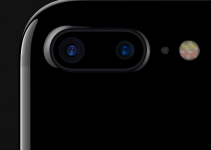When we talk about ARRI cameras we almost always talk about the ALEXA. There are many flavors of ALEXA, including the Mini, 35, Classic, etc., but there was one spinoff that deserves a bit more attention: the AMIRA.
This was designed off the same lovely imaging pipeline as the ALEXA with a few tweaks that made it even better for run-and-gun filmmaking and fast turnarounds.
At least one team thinks the AMIRA deserves another look as the guys at CVP have just put together a new video on the cinema camera. Whether you knew about the AMIRA when it came out or are just learning about it for the first time now you should go check it out.
“Go anywhere, shoot anything.”
That was the advertised tagline of the ARRI AMIRA and made it clear what their intentions were with this release. It blended image quality, form factor, durability, features, and usability.
As much as people love ARRI cameras, being easily thrown on a shoulder and being used for projects with tight deadlines was not their forte. Released four years after the original ALEXA, the AMIRA aimed to be perfect for documentary and handheld work.
Considering the age, it is impressive how much these are still used and how well they held their value. Right now a kit with the Advanced License will run around ~$15,000.
Image Quality and Formats
The AMIRA has the same sensor as the other ALEXAs (except the just-released ALEXA 35). This means image quality is just as good as you would expect.
A nice addition to the AMIRA was, since the ALEXA sensor is not true 4K, the ability to record in UHD 4K in ProRes with in-camera upsampling. The camera is limited in some ways though, like only being able to record in 16:9 aspect ratio.
Licenses are available to unlock a lot of features, but they are expensive so if you are buying used try and find one with the license you need.
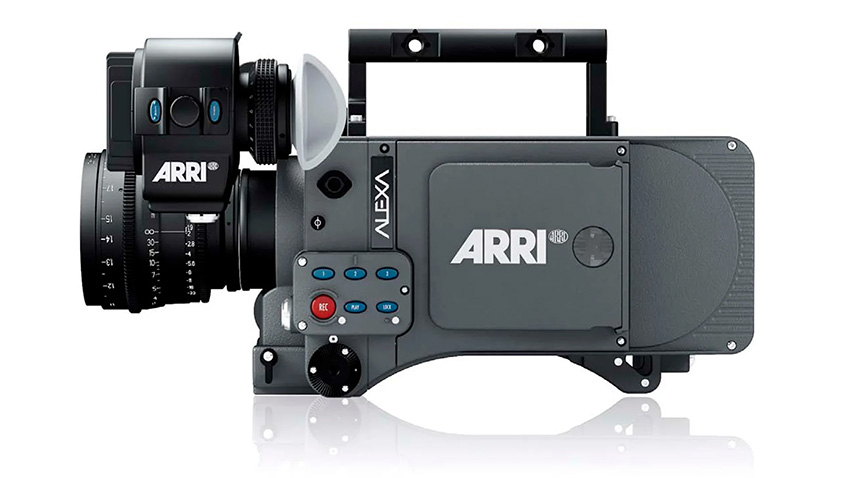
Image Credit: ARRI
All your traditional lenses will work no problem. There is even a B4 adapter for using broadcast lenses with a crop.
Plenty of recording options are available in the AMIRA. There is ARRIRAW, ProRes, and MPEG-2 (depending on your licenses).
You can capture up to UHD 4K in ProRes up to 60p, ARRIRAW up to 48p, and 2K ProRes up to 200 fps. Slow motion looks great.
You can also ingest, record, and distribute custom LUTs which should make turnaround times and fast workflows much easier.
Body Design
The design is what separates the AMIRA from the rest of the line. It is designed to be pulled out of a bag by a solo operator and be tossed on a shoulder and ready to shoot.
It boots up relatively quickly (18 seconds) and it has an integrated bubble level on the top of the body.
The side controls have been redesigned for on-shoulder use with a set of three dials up front for easier use during shooting and then others farther back to do the more advanced functions.
The main baseplate and top handle are very adjustable to get the proper balance and be comfortable. It is still a very heavy camera. You’ll need to prepare for that.
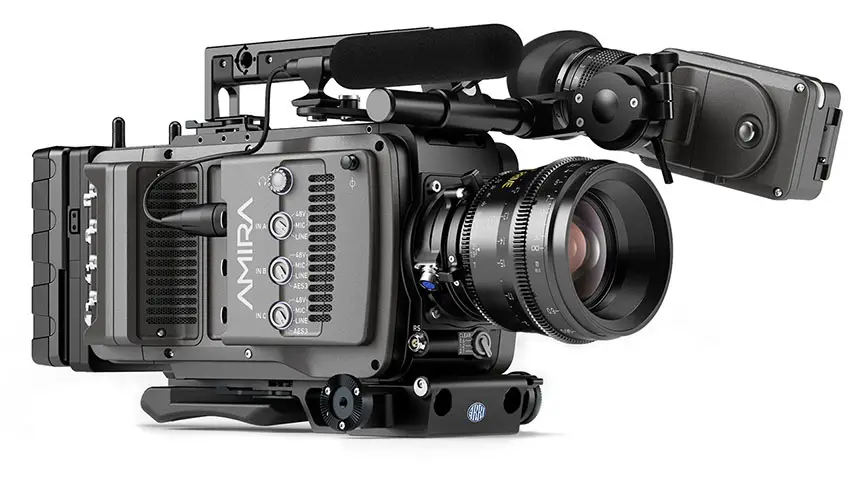
Image Credit: ARRI
Being heavy is indicative of durability. The AMIRA is exceptionally rugged and can handle all the dings and bumps that happen on professional film sets.
Other nice thoughts include hot air being pushed out on the opposite side to the operator, so you aren’t getting hot air blown in your face. It also offers a dual CFast 2.0 card slots.
There is a four-stage internal ND system with clear, 0.6, 1.2, and 2.1 settings. Respectable but perhaps a tad slow.
It is still power hungry, so there will be a need for some large V-mount batteries and probably a couple spares for a long shoot.
I/O is quite solid. There are two SDI outputs, BNC and timecode sync ports, an assortment of power connectors. You’ll be able to power all your accessories and lenses without issue.
Audio
Audio was a major part of what made the AMIRA good for run-and-gun productions. It could record up to four channels of 24-bit 48kHz audio via three full-size phantom-powered XLR ports. There were two standard 3-pin XLR and one 5-pin.
The operator side control panel was designed solely to handle audio coming into the AMIRA. There are dials and switches to give you rapid control over the audio in real-time.
On the right hand side are the additional controls, such as mic/line level and phantom power. These are harder to turn since it is assumed that once they are set you don’t want to have them accidentally changed in the middle of a take.
A relatively unique feature is the ability to connect Bluetooth headphones to the AMIRA for monitoring audio.
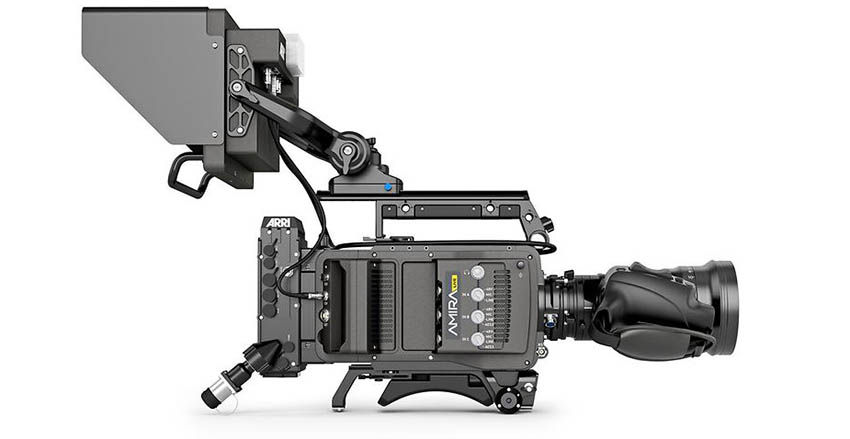
Image Credit: ARRI
AMIRA Live
Having made significant inroads in broadcast, ARRI actually developed a follow-up to the AMIRA called the AMIRA LIVE in 2021. It added a fiber adapter that will help get it integrated into proper multi-cam productions.
There is also a larger 10” monitor that will provide operators with a better view in live scenarios.
The ALEXA 35
The elephant in the room is the just-released ALEXA 35. This camera is a major jump in performance compared to the past decade of ALEXA cameras, including the AMIRA.
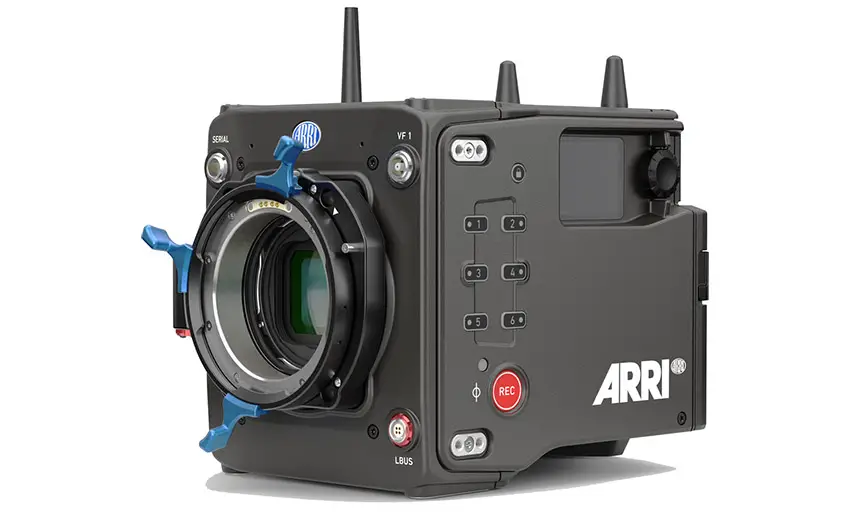
Image Credit: ARRI
While the ALEXA 35 is notably better, it likely won’t mean a dramatic drop in value is imminent for existing ALEXA and AMIRA cameras.
The ALEXA 35 is able to be configured to operate in a similar way to the AMIRA, but it isn’t quite to the same level as it in terms of run-and-gun operability.
If you can find a solid AMIRA for a reasonable price then it might be very worth it.
Are you interested in getting an ALEXA or AMIRA today?
[source: CVP]
Disclaimer: As an Amazon Associate partner and participant in B&H and Adorama Affiliate programmes, we earn a small comission from each purchase made through the affiliate links listed above at no additional cost to you.


